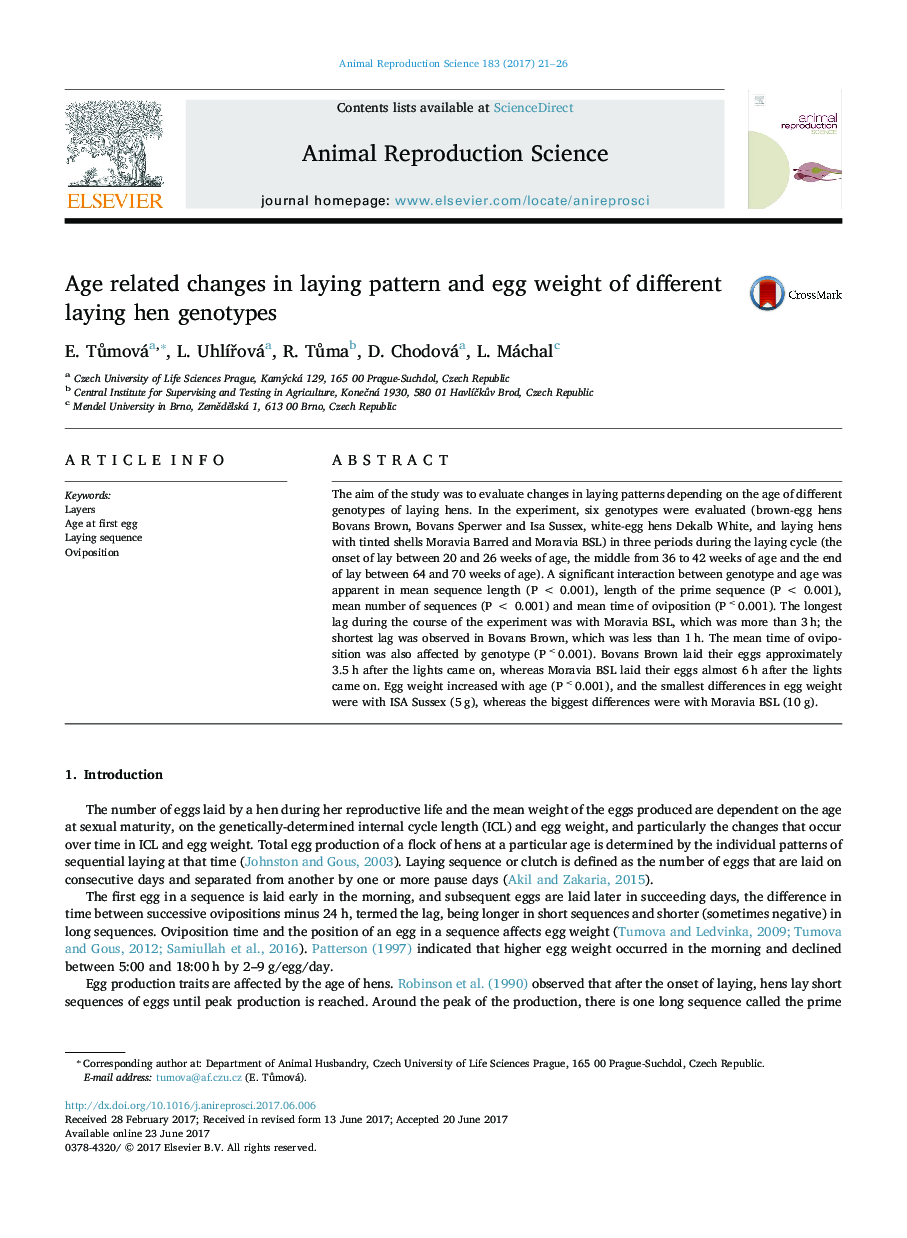| Article ID | Journal | Published Year | Pages | File Type |
|---|---|---|---|---|
| 5520300 | Animal Reproduction Science | 2017 | 6 Pages |
â¢Laying pattern at the three phases of the laying cycle in six genotypes.â¢Genotype with the latest age at the first egg produced the lowest number of eggs with the highest weight.â¢Significant interaction of genotype and age in mean sequence length, prime sequence length, mean number of sequences, time of oviposition was observed.â¢Brown-egg layers laid eggs more than 1 h earlier than white-egg and almost 2 h earlier than tinted-egg layers.â¢Each genotype showed unique laying pattern during the laying cycle.
The aim of the study was to evaluate changes in laying patterns depending on the age of different genotypes of laying hens. In the experiment, six genotypes were evaluated (brown-egg hens Bovans Brown, Bovans Sperwer and Isa Sussex, white-egg hens Dekalb White, and laying hens with tinted shells Moravia Barred and Moravia BSL) in three periods during the laying cycle (the onset of lay between 20 and 26 weeks of age, the middle from 36 to 42 weeks of age and the end of lay between 64 and 70 weeks of age). A significant interaction between genotype and age was apparent in mean sequence length (PÂ <Â 0.001), length of the prime sequence (PÂ <Â 0.001), mean number of sequences (PÂ <Â 0.001) and mean time of oviposition (PÂ ËÂ 0.001). The longest lag during the course of the experiment was with Moravia BSL, which was more than 3Â h; the shortest lag was observed in Bovans Brown, which was less than 1Â h. The mean time of oviposition was also affected by genotype (PÂ ËÂ 0.001). Bovans Brown laid their eggs approximately 3.5Â h after the lights came on, whereas Moravia BSL laid their eggs almost 6Â h after the lights came on. Egg weight increased with age (PÂ ËÂ 0.001), and the smallest differences in egg weight were with ISA Sussex (5Â g), whereas the biggest differences were with Moravia BSL (10Â g).
